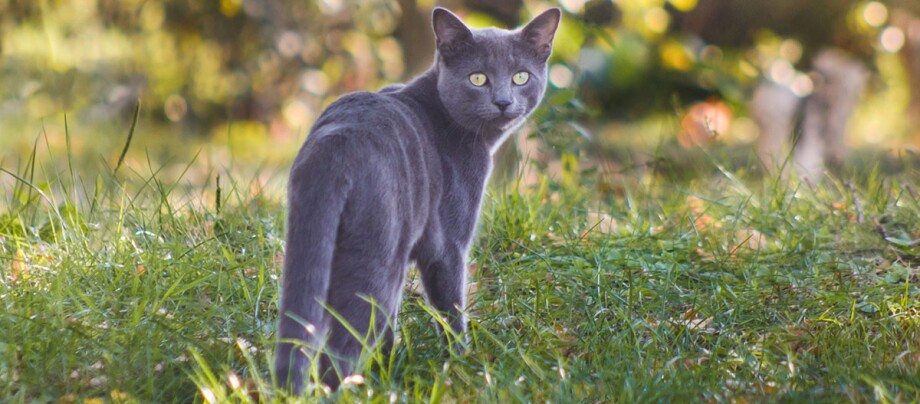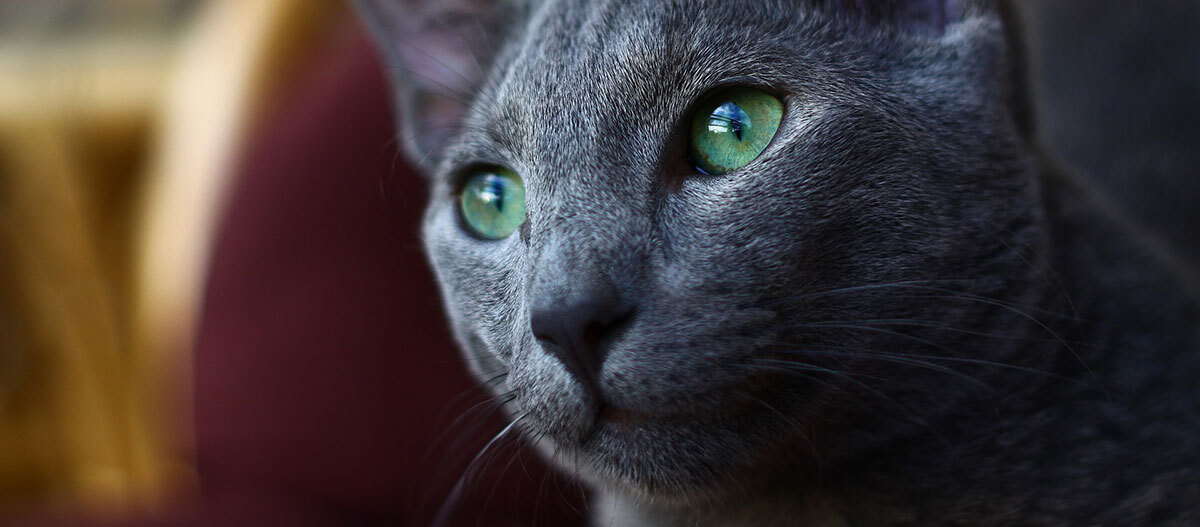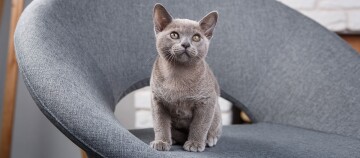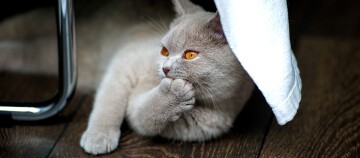Russian Blue – Proud Beauty and Loyal Soul Who Likes Peace and Quiet
01.01.2024 - Reading time: 3 minutes

If you are looking for a purring housemate for a calm household and already have some experience with cats, the Russian Blue may be the ideal cat breed for you. Once it has won the heart of its owner, the bond is strong. However, the Russian Blue is not born beautiful, but is usually born with grey eyes and tiger stripes. Although the graceful animals originated in Russia as a natural breed, they are now admired by cat lovers all over the world.
NewsletterRussian Blue
Breed | Russian Blue |
Origin | Russia |
Size | average size; shoulder height for females 20 to 30 cm, for males 30 to 40 cm |
Weight | Female 2.5 to 4 kilograms, male 4 to 6 kilograms |
Physique | muscular, moderately slim, small paws, long legs |
head shape | angular, large ears, typical “smile” from the conspicuous whisker pads |
Eyes | almond-shaped, light green to jade coloured |
Coat and colour | Double coat in single colour shimmering grey with distinctive silver shimmer created by the colourless hair ends |
Coat care | weekly brushing |
Special features | very sensitive, not for a first-time cat owner, needs a great deal of contact with an attachment figure |
Nature | calm, playful, devoted and intelligent |
Russian Blue: character
The Russian Blue likes their peace and quiet. They don’t enjoy too much hustle and bustle around them. You have to earn your trust with them: the Russian Blue chooses very intentionally who it will spend time with. This silver paw is as proud as a Russian and as selective as a diva. It responds to strangers with a somewhat shy and distanced manner. However, once a mutual regard has been established, the Russian Blue is a loyal soul. Their high intelligence gives them intriguing behaviours like opening cupboard doors by themselves. The Russian Blue is happy to play for a living, even at an advanced age. Cat toys are therefore a necessity in a home shared with a Russian Blue. Despite their considerable jumping power, Russian Blue cats are very cautious – you don’t have to worry about broken porcelain when they go on an expedition.
Russian Blue: keeping
Thanks to its calm disposition, the Russian Blue is satisfied as a house cat when a safe balcony is available. They don’t like to be alone, though, and need their people and fellow cats in their vicinity, including regular petting. They place great value on a structured daily routine. When the occasion arises, they love to sleep under the covers, and preferably in bed.
Care for the Russian Blue
The fur of the Russian Blue is unique: this is the only breed of cat with undercoat and topcoat of the same length. The fur therefore sticks out very easily, and the colourless tips of the hair give a characteristic shimmering effect. The cats lose very little hair, and brushing once a week is sufficient. Give your cat a little massage when you do so. The Russian Blue does not have a tendency for genetic illnesses. The life expectancy of the Russian Blue is quite long at up to 20 years.
Colours of the Russian Blue
The Russian Blue is a short-haired cat whose colour is an elemental characteristic of the breed. Therefore the breed standard permits only single colour blue-grey and grey animals. A slight tabby marking on the tail is tolerated.

History of the Russian Blue
Hard to believe: the Russian Blue is actually a natural colour variation. The first breeding animals came from Archangelsk; sailors brought them to Great Britain in 1860. In 1875 the cats were first presented at an exhibition. By 1900 the cats, now officially known as Russian Blue, were popular in the czar’s court as well as with the British nobility. Since 1937, the Russian Blue has held the status of an independent cat breed. By crossbreeding Siamese as well as British and European short-haired cats, it was possible to save the breed that was almost lost after the Second World War. Today there are three breed types: the English variant, the Siberian-Scandinavian type and the American Russian Blue which is not often seen in Europe.
Characteristics of the Russian Blue
As a kitten the Russian Blue cat is a tiny whirlwind. With age, the temperament settles down.





